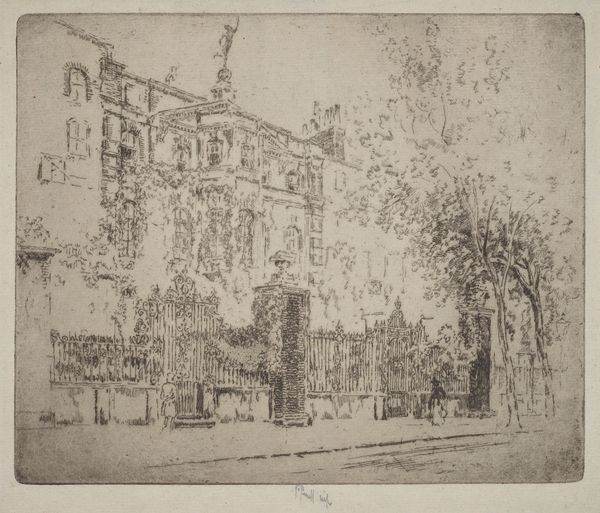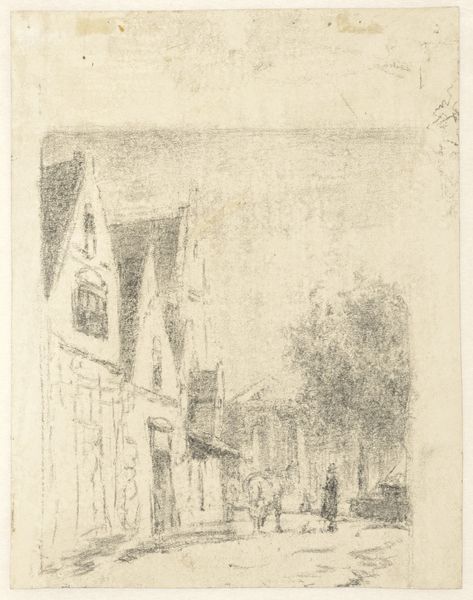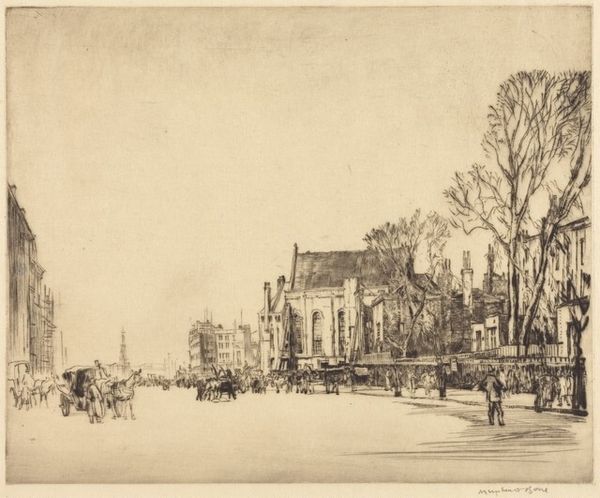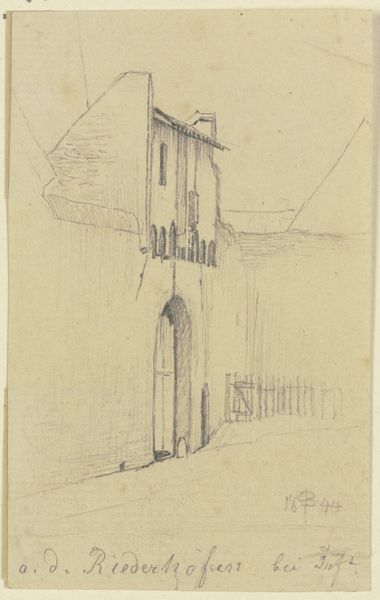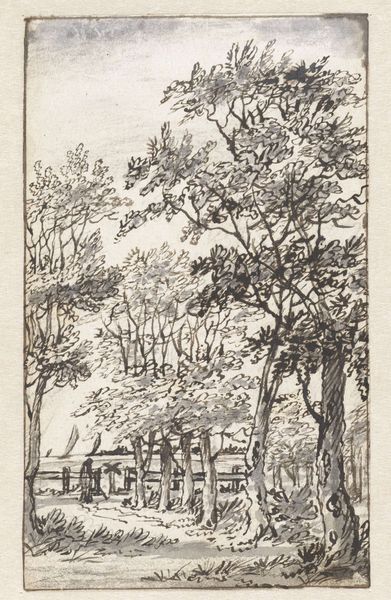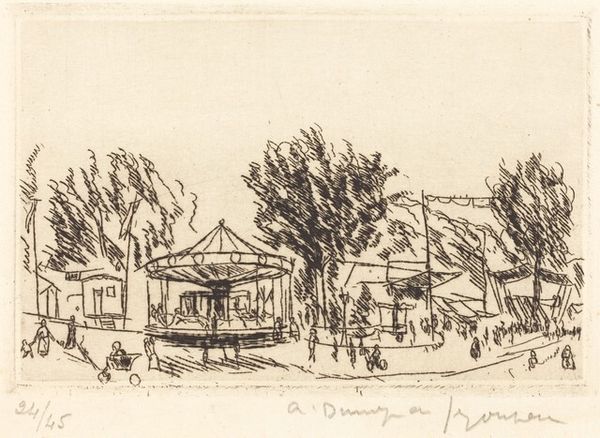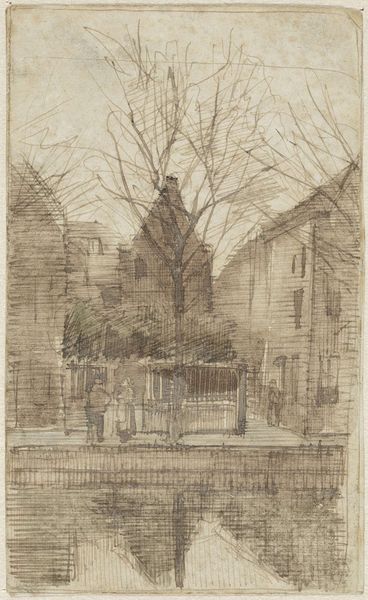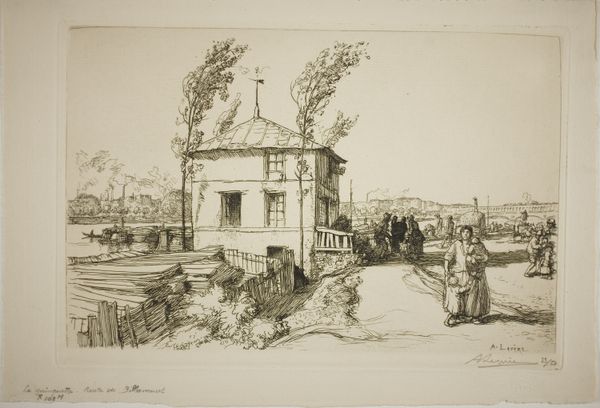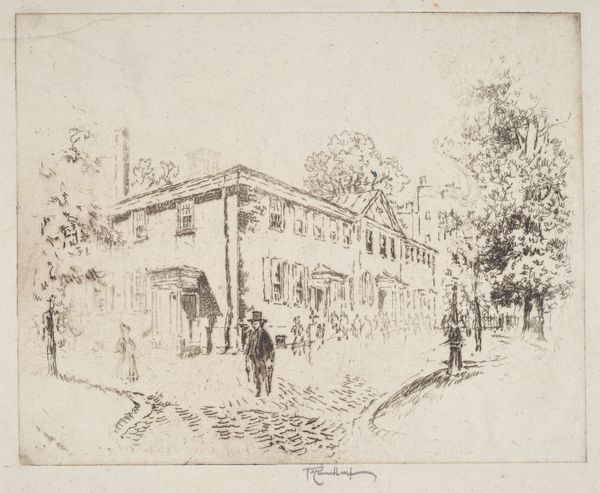
drawing, print, etching, paper
#
drawing
# print
#
etching
#
landscape
#
etching
#
paper
#
cityscape
Dimensions: 254 × 204 mm (image); 347 × 211 mm (Sheet)
Copyright: Public Domain
Editor: So this is Joseph Pennell's "St. Peter's, From Pine Street, Philadelphia," created in 1920. It’s an etching on paper, and the detail is incredible. It feels like a quiet, contemplative moment captured in a bustling cityscape. What stands out to you in this piece? Curator: The way Pennell situates this established church, St. Peter's, amidst the modernizing city speaks volumes. Consider the era: 1920, post-World War I. Philadelphia was undergoing massive industrial growth, demographic shifts, and, arguably, a spiritual reckoning. The church, literally grounded, becomes a symbolic anchor. How do you interpret the presence of figures seemingly milling about rather aimlessly? Editor: That's interesting. I hadn't really thought of them that way. They seemed to just blend into the background for me as more shapes rather than defined individuals. Curator: Exactly, they are intentionally vague, but Pennell, consciously or not, positions these ordinary people relative to an institution laden with colonial legacies of power and faith. Does that tension between institution and individual spark anything for you? Perhaps ideas about social class, visibility, and historical entitlement? Editor: Definitely. Thinking about it, the church seems almost imposed on the scene, a silent observer overlooking these people on the street. You mentioned power and legacies; were there any known connections to those legacies visible through class in Philadelphia that time? Curator: Certainly, and that intersection of architectural dominance and human movement begs examination, especially since Pine Street historically marked a socio-economic dividing line within the city. Did the style of the building stand out to you, relative to modern architecture that emerged in that same time period? Editor: Yes, because the stark contrast does invite this feeling of dissonance that is really compelling. Now I am seeing Pennell's decision to highlight it this way in an entirely new light. Thank you! Curator: Indeed! This reminds us that art doesn’t exist in a vacuum; it is intrinsically tied to social and historical circumstances.
Comments
No comments
Be the first to comment and join the conversation on the ultimate creative platform.

